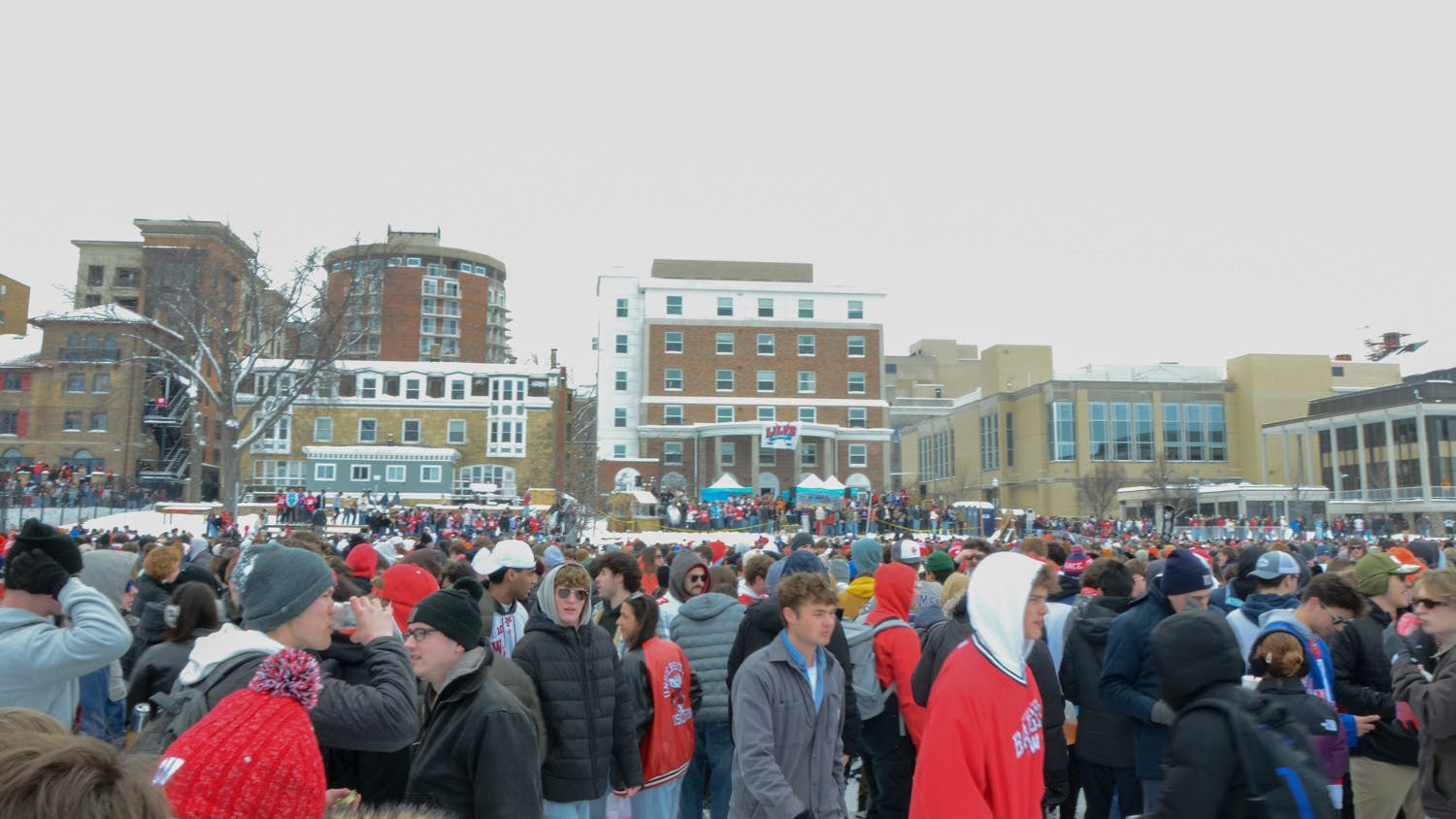It is spring 2027 and after 20 years of career and family building, I find myself back at UW-Madison for the first time in more than 15 years. Having successfully avoided calls and mail from the alumni association for years, my badger-alum husband finally convinced me to at least take a look around. It had been years since I visited, and after picking up a map and information pamphlet at the visitor center, my husband, two kids and I set out to explore. We look around, searching for any familiar landmark.
A sign labeled ""Ogg Hall"" elicits memories of the tiny rooms and cockroaches from my freshman year. This building looks nothing like the Ogg I came to love, it is newer and actually looks inviting from the outside.
My map tells me I'm on the East Campus Mall, a pedestrian path stretching from Regent Street up to Library Mall. My family and I walk a little farther up the path, past the green space where my old dorm used to stand and the high-rise apartments where University Square once was. Suddenly I notice something is missing. Humanities, the fortress-like hall where I had many classes, has been knocked down and replaced with two brand-new buildings. The area where I spent most of my undergraduate years looks entirely different, quaint almost like a neighborhood—all of the buildings alike, housing similar subjects.
These academic neighborhoods appear in different areas around campus, and apparently trace their roots to the campus master plan from 2005. I look around and also see much more green space and fewer cars. There are now fewer surface parking lots and more high-rise parking ramps allowing for more open space.
""Mommy, why aren't those kids in class?"" asks my 11-year-old boy as he looks at a group of students out on Bascom Hill sitting with their laptops at lecture. It seems the entire campus now functions as a classroom, and communication with professors is now instantaneous through virtual networks. We walk together down University Avenue all the way to the new Union South.
UW-Madison now sells ""The Wisconsin Experience"" as a way to attract prospective students in an increasingly competitive college environment. The four elements my pamphlet highlights are student activism, volunteering, studying abroad and research. All four parts have developed in the last 20 years. From taking more courses integrated with volunteering to protesting for the right to party, students now participate like they never have before. And I thought I was busy in 2007....
To speed up our reminiscing, my family and I hop on one of the new bus routes carrying students from one end of campus to the other. The ad on the inside says it takes less than 10 minutes for a complete tour so I take a break from the sights to look up more information in my pamphlet.
The buildings I remember, like Van Hise and Humanities, were constructed in the 1960s and 1970s to last only a few decades because the student population grew so quickly. They were torn down shortly after I graduated. Now, the buildings in their places have been built to last 100 years, and can be renovated easily as tastes and technology change.
We leave across from the Institute of Discovery, the new educational center where the Psychology building used to be on Johnson Street and University Avenue. I see a sign for the new women's hockey rink pointing down Randall Avenue just before we take off for the medical school. As the bus rounds the west campus, where new medical sciences buildings have been built, I notice there are many more details to campus. Trees, ""W"" flags, lampposts, even customized bus stops seem to really pull the campus together.
As we approach what I expected would be Van Hise Hall towering above a busy intersection at Charter and Linden, I find another green pedestrian mall where Van Hise once stood. My map says it is the other half of Bascom Mall, originally planned by campus developers in the early 1900s.
We round the bend by Muir Knoll on Observatory Drive and I am pleasantly surprised to find my favorite old buildings, Memorial Union and the Red Gym, still standing and looking as timeless as ever. Somehow I had assumed they would be torn down eventually. My pamphlet tells me the historical buildings are not going to be replaced, just renovated one at a time.
We drive up State Street, past the familiar view of the Capitol, then wind down Lake Street toward the southeast dorms and the Kohl Center where I spent many afternoons laying outside in the sun. Every sight brings back memories I thought had been lost forever, each one making me smile more.
We end our tour back at the Institute of Discovery. As I step off the bus, I am amazed at how quickly UW-Madison changed and matured, almost as if the campus grew up with me.
-John Chadima, Lori Berquam, Aaron Brower, Al Fish and Gary Brown contributed to this report.





